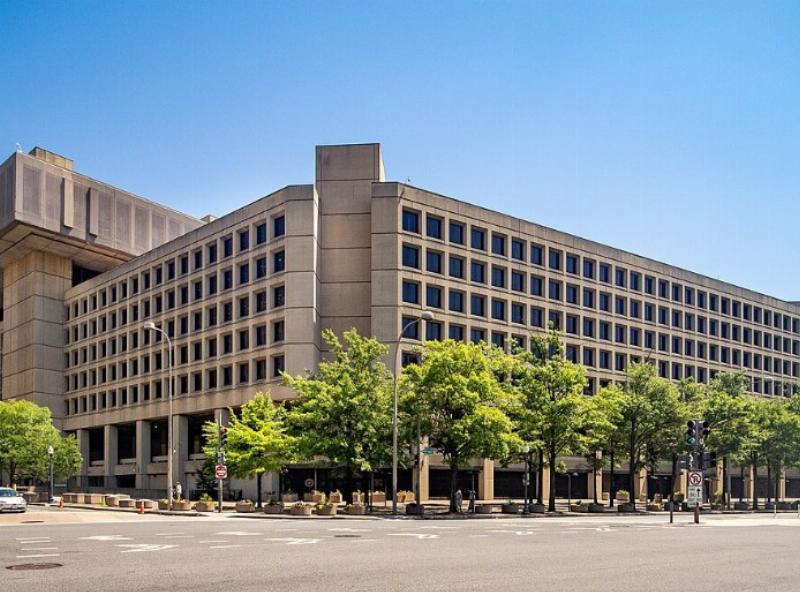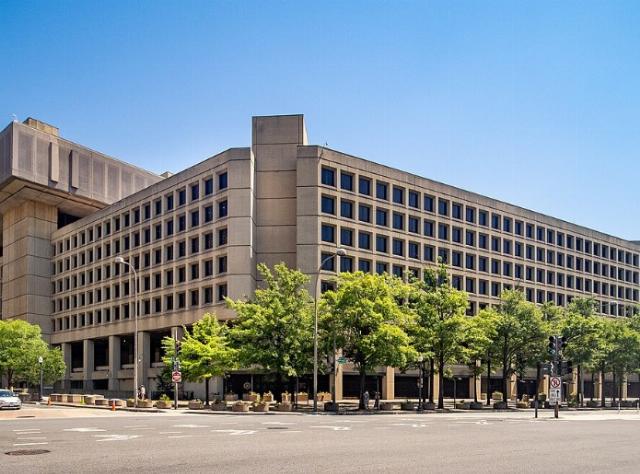


A not so rhetorical exercise that occasionally makes the rounds asks the reader to look at the 45 goals of the Communist Party that were read into the Congressional Record in 1963 and consider how many have actually been accomplished. “Not for nothing,” as they say, but a significant percentage of the items on that list are already in place.
For the purposes of this essay, I would direct the reader to this little gem:
22. Continue discrediting American culture by degrading all forms of artistic expression. An American Communist cell was told to “eliminate all good sculpture from parks and buildings, substitute shapeless, awkward and meaningless forms.”
This brings us to the subject of architecture. Some of the most beautiful buildings in the world have been built in a traditional or classical style. Churches and cathedrals built in this style have drawn the faithful to worship and appreciate their beauty. They direct the viewers’ eyes and thoughts to Heaven, soothe the spirit, and calm the mind. They inspire us, reminding us that we are loved and valued by God and are part of a larger community.
Similarly, civic buildings using this style create a serious, thoughtful atmosphere that hopefully causes those who enter to realize that governing is a serious business and carries great responsibility.
Beginning in the mid-20th century, a new style emerged. “Brutalist” architecture (B.A.) is characterized by raw, unadorned materials — especially concrete — in stark, geometric forms that focus on functionality over ornamentation. It often conveys a sense of strength, permanence, and utilitarianism. The term originates from the French béton brut, meaning “raw concrete,” popularized by architect Le Corbusier. Brutalism flourished from the 1950s to the 1970s and is often used for institutional buildings like government offices, universities, and cultural centers. It is intended to reflect the ideals of social progress and efficiency.
B.A. features unfinished concrete, brick, or steel. It is blocky, angular, or monolithic, often with repetitive patterns and designs that prioritize utility rather than aesthetics, lacking frills. Typical examples of B.A. include the FBI Building in Washington, D.C.; Boston City Hall, Boston, Mass.; and the Temple Beth Zion in Buffalo, N.Y. There are many, many more in the U.S.
There are those who appreciate its simplicity and utilitarianism. Supporters of B.A. commonly refer to its style as raw, unpretentious, bold, and an honest expression of a building’s purpose. They admire the way it strips away unnecessary decorations in order to reveal the true nature of the building materials and construction.
Critics, however, find the buildings harsh and unwelcoming, creating oppressive environments. They claim that B.A. can depress mood and quell inspiration among those who work in or visit such buildings through a combination of psychological, sensory, and symbolic factors. Its features may contribute to feelings of alienation, stress, and emotional drain.
Since buildings constructed in B.A. style feature massive, blocky geometries, they dwarf individuals and can evoke a sense of insignificance or intimidation. This can lead to heightened anxiety and a subdued sense of personal freedom, making it harder to feel inspired or creative. Boston City Hall, for example, has been described as projecting authority and demanding submission, pressing downward on the psyche rather than uplifting it. Workers in these environments may feel like cogs in a bureaucratic machine.
Exposed, unfinished concrete is often gray, pitted, and textured, which creates a visually harsh environment that feels unwelcoming and lacking in humanity. The monotony caused by lack of color, curves, and natural materials can foster depression. A Guardian article notes that such façades cause stress and that concrete’s “delicate sense of terror” stems from its war-inspired aesthetics that evoke a dystopian, Orwellian atmosphere.
Many brutalist interiors have limited natural light due to small, deep-set windows. The hard surfaces may create echoes that can amplify noise and create disorienting acoustics. Some studies show that urban architectures such as these heighten stress, leading to depression and lack of inspiration by fostering persistent low moods. High-rise brutalist housing has even been associated with behavioral problems as residents (or workers) on upper floors tend to withdraw, exacerbating loneliness.
B.A. often symbolizes bureaucracy, control, and failed utopias, subconsciously depressing workers, residents, and visitors by reminding them of repression or social decline. It is sometimes seen as intentional ugliness to break spirits. The British Journal of Psychiatry found that urban concrete-heavy settings can worsen mental health compared to rural or greener ones, as the material itself evokes discomfort.
When considering brutalist architecture, we see its raw, utilitarian aesthetic that is quite at odds with the uplifting, soul-stirring designs of traditional and classical styles that once defined our civic landscapes. Although B.A.’s minimalist aesthetic may appeal to some for its functionality, its oppressive, monolithic forms and cold, concrete façades may alienate and dishearten.
When reflecting on the 1963 Communist Party goal to degrade artistic expression by replacing beauty with shapeless forms, B.A. emerges as a disturbing embodiment of this agenda — a style that may diminish human spirit and disconnect us from the divine ideals that once shaped our environment.

Image: FBI headquarters in Washington, D.C. Credit: ajay_suresh via Flickr, CC BY 2.0.
